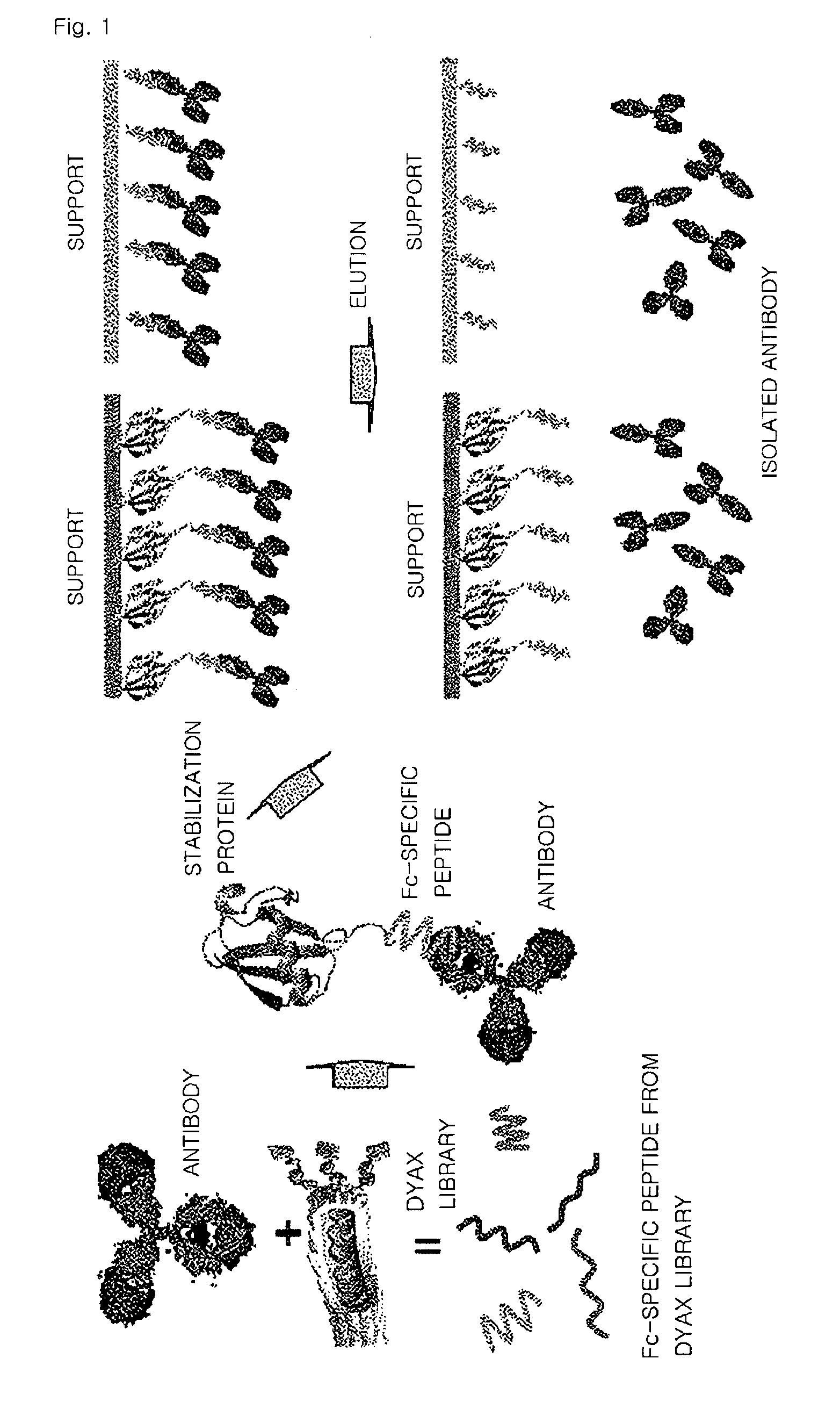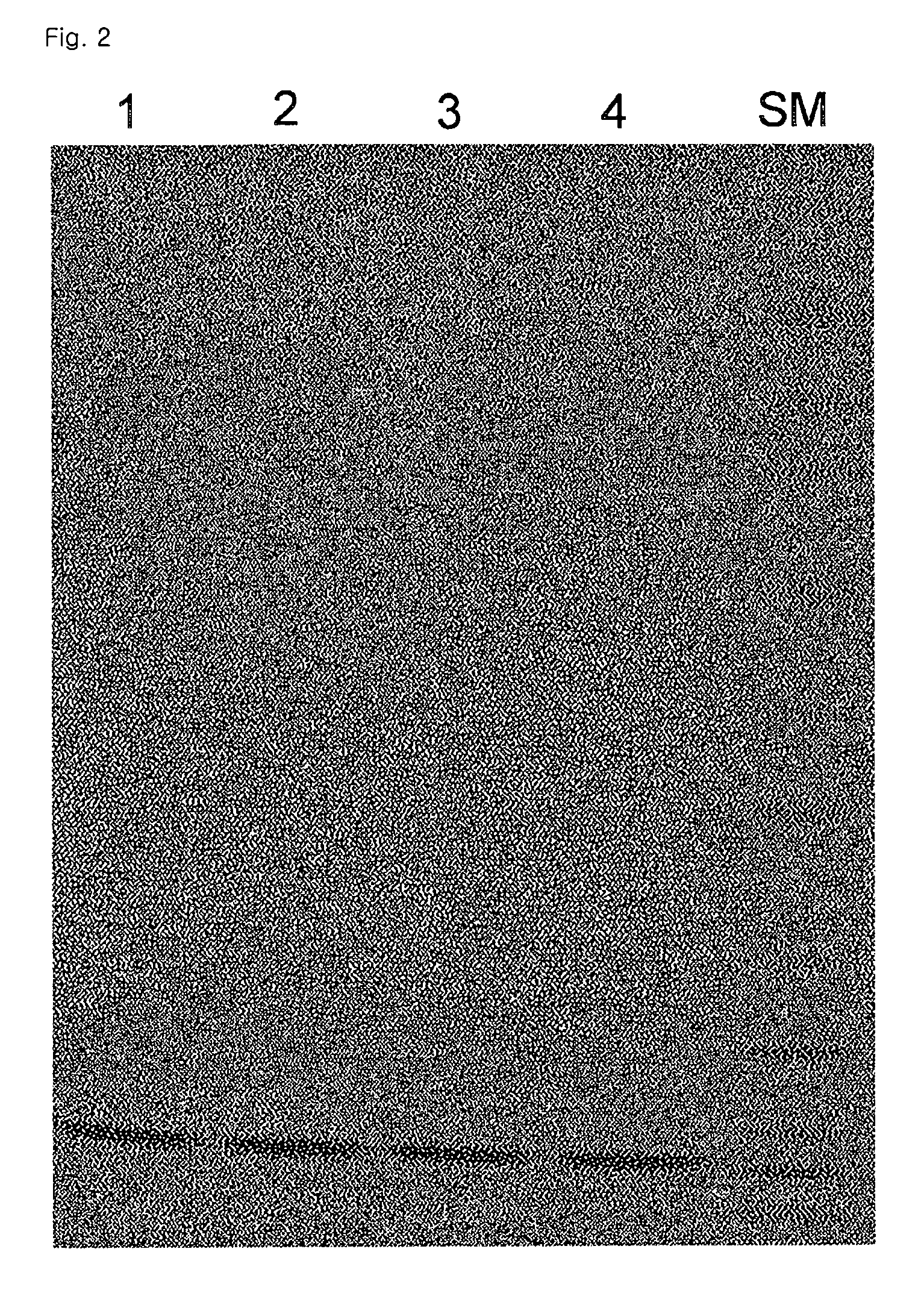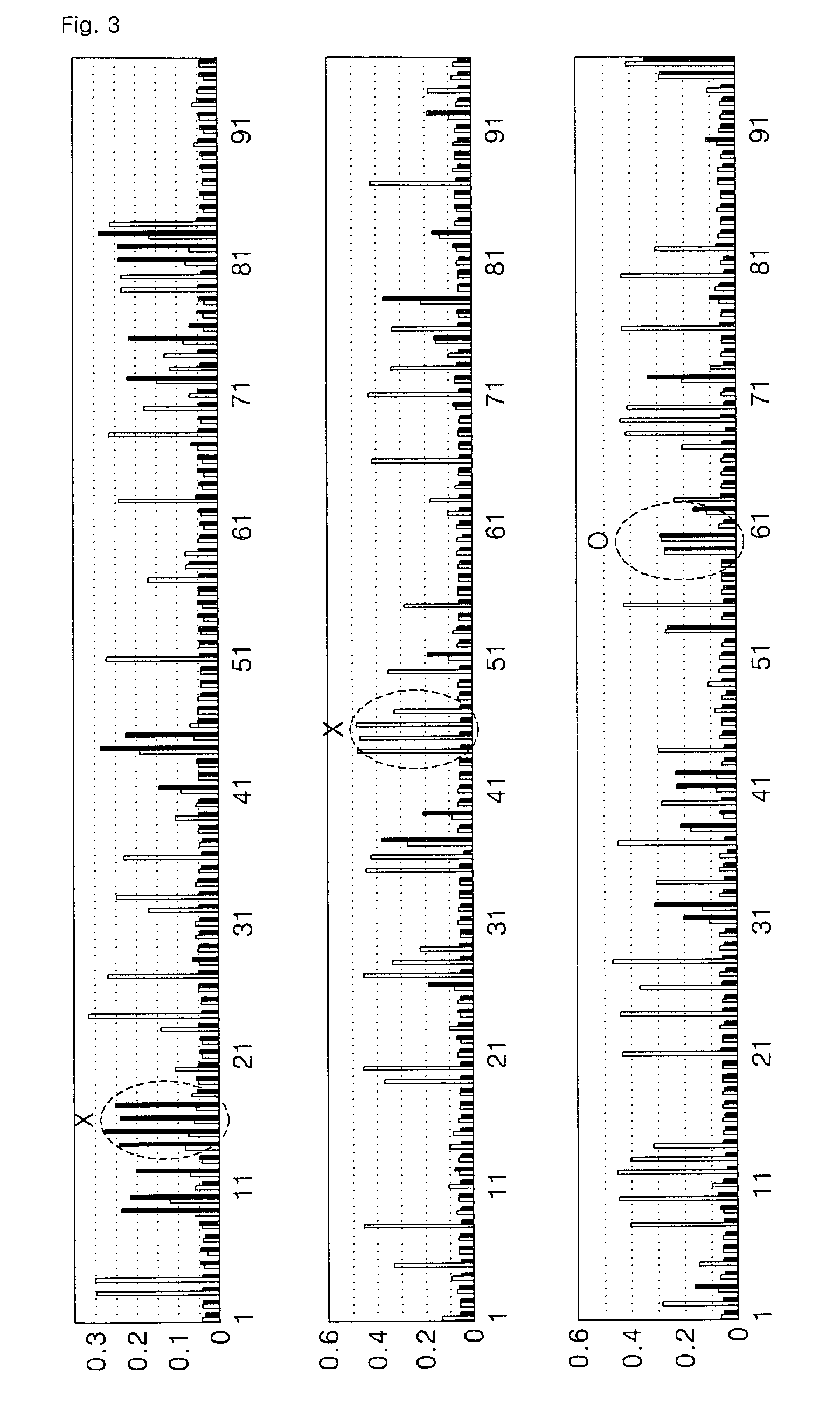Fusion protein binding specifically to constant region of antibody, method of preparing the fusion protein, and method of isolating antibody using the fusion protein
a technology of fusion protein and constant region, which is applied in the direction of fusion polypeptide, peptide/protein ingredients, dna/rna fragmentation, etc., can solve the problems of not being able to remove contaminants from isolated antibodies, affecting the quality of antibody isolation,
- Summary
- Abstract
- Description
- Claims
- Application Information
AI Technical Summary
Benefits of technology
Problems solved by technology
Method used
Image
Examples
example 1
Screening of Polypeptide that Binds Specifically to a Constant Region of an Antibody
[0055]In order to obtain high specificity during screening using a peptide library, an antibody protein was immobilized on a plate with such an orientation that a constant region of the antibody protein was exposed.
[0056]Then, a phage peptide library (a polypeptide library having about 10-billion different amino acid sequences) produced by Dyax Co., Ltd. was added thereto in order to bind to the antibody protein, and the resultant was subjected to various binding hours and washing conditions. Then, peptide expression phages that bound with high affinity were selected.
[0057]In detail, a peptide library in which 19 amino acids were displayed on a surface of a phage was added to an antibody protein immobilized on a plate and then the resultant was washed under various conditions. Then, the bound phage was obtained by elution. The obtained phage was infected with E. coli and then amplified. Then, the pha...
example 2
Preparation of Fusion Protein Including Polypeptide that Binds Specifically to a Constant Region of an Antibody and Ubiquitin
[0058]In this experiment, a fusion protein was prepared by fusing ubiquitin with the polypeptide that binds specifically to a constant region of an antibody prepared according to Example 1.
[0059]A polynucleotide fragment encoding a fusion protein formed by fusing ubiquitin with a C-terminal of the polypeptide of Example 1 was obtained by PCR amplification using a human ubiquitin wild-type DNA and the polynucleotide of Example 1 as a template (SEQ ID NOS: 8 through 11). The polynucleotide fragment encoding a fusion protein was cloned into a pET21b (Novagen) vector and then expressed in E. coli BL21(DE3). In this regard, the culture used was an YT medium, and when an O.D. value was 0.6 at a wavelength of 600 nm, 1 mM IPTG (isopropyl-β-D-thiogalactopyranoside) was added thereto and then the resultant culture was incubated at a temperature of 37 for 4 hours. Cells...
example 3
Preparation of Chromatography Column for Isolating Antibody
[0062]Since in the fusion protein selected according to Example 2, a C-terminal of the fused ubiquitin contains a cysteine, the fusion protein was combined with a support by the cysteine, thereby producing a structure including a support and the fusion protein that are bound to each other by a covalent bond. A glass column was packed with the structure, thereby preparing an affinity chromatography column for isolating an antibody.
PUM
| Property | Measurement | Unit |
|---|---|---|
| pH | aaaaa | aaaaa |
| pH | aaaaa | aaaaa |
| pH | aaaaa | aaaaa |
Abstract
Description
Claims
Application Information
 Login to View More
Login to View More - R&D
- Intellectual Property
- Life Sciences
- Materials
- Tech Scout
- Unparalleled Data Quality
- Higher Quality Content
- 60% Fewer Hallucinations
Browse by: Latest US Patents, China's latest patents, Technical Efficacy Thesaurus, Application Domain, Technology Topic, Popular Technical Reports.
© 2025 PatSnap. All rights reserved.Legal|Privacy policy|Modern Slavery Act Transparency Statement|Sitemap|About US| Contact US: help@patsnap.com



